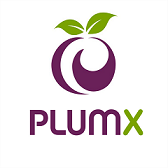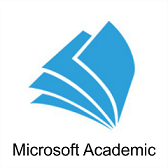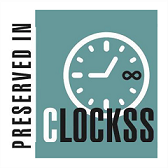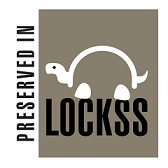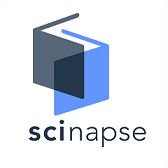Effectiveness of Creative Drama Use in Kiswahili Language Instruction in Public Junior Schools in Nambale Sub-County, Kenya
Abstract
In Kenya, Kiswahili is both the national and official language. It is the most common language of interaction, hence a uniting force among the diverse cultures in the country. Considering its importance, to enhance Kiswahili teaching and learning, innovative and interactive instructional strategies are essential. Creative drama is recognized as an effective pedagogical tool in language education, fostering engagement, comprehension, and retention. Yet, no research has evaluated the effectiveness of creative drama techniques applied in the teaching and learning of the Kiswahili language. This study assessed the effectiveness of creative drama techniques in the teaching and learning of the Kiswahili language in public junior schools. It was conducted in public junior schools in Nambale Sub-County, Kenya. Anchored on Vygotsky’s Social Theory of Language Development, the study utilized a descriptive survey research design. It targeted all grade 7 learners and their teachers of Kiswahili from 63 junior schools. Of these schools, 180 learners and 18 teachers were sampled using a simple random sample technique from 18 junior schools. Additionally, 18 Kiswahili language lessons were purposively sampled for lesson observations. Data for the study were collected using a questionnaire for learners, an interview schedule for teachers, and a lesson observation schedule. Quantitative data were analysed descriptively, while qualitative data was analysed thematically. Findings revealed that creative drama positively impacted Kiswahili teaching and learning experiences, with activities like role-play, storytelling, and language games enhancing students' speaking and listening skills. To improve the teaching and learning of the Kiswahili language, the Ministry of Education and the Teachers Service Commission should prioritize the integration of creative drama into the curriculum while providing targeted professional development programmes and resources for teachers
Downloads
References
Abdelkader, A. M., Amin, N. M., & Almefarfesh, A. (2019). The relationship between learner-centered teaching and learning motivation among nursing students in Minia University. Journal of Nursing Education and Practice, 9(10), 42-49.
Abobo, F., Orodho, J. A., & Ruga, T. (2019). Influence of Computer Technologies on Learning Areas in Kiswahili Grammar Aspects in Secondary Schools in Nakuru County, Kenya. International Journal in Commerce, IT and Social Sciences, 6(04), 1-17.
Alam, A. (2020). Challenges and possibilities in teaching and learning of calculus: A case study of India. Journal for the Education of Gifted Young Scientists, 8(1), 407-433.
Altman, J. B. (2024). The Tudor play of mind: rhetorical inquiry and the development of Elizabethan drama. University of California Press.
An, Y., & Mindrila, D. (2020). Strategies and tools used for learner-centred instruction. International Journal of Technology in Education and Science, 4(2), 133-143.
Angelianawati, L. (2019). Using Drama in EFL Classroom. Journal of English Teaching, 5(2), 125-134.
Arishaba, E., & Balimuttajjo, S. (2024). Learner Centred Instructional Methods and Observable Academic Competencies in Kiswahili Language among Secondary School Students in Mbarara Municipality, Uganda. Journal of Research Innovation and Implications in Education, 8(1), 109-119.
Baraza, E., & Abeka, S. (2019). The Influence of Language and Literacy in Opening up Education of an African Child: A Case of Kenya. Retrieved from http://oasis.col.org/handle/11599/3244
Briones, E., Gallego, T., & Palomera, R. (2022). Creative Drama and Forum Theatre in initial teacher education: Fostering students’ empathy and awareness of professional conflicts. Teaching and Teacher Education, 117, 103809.
Christian, S. N. (2022). Learner Centred Teaching Techniques and Students’ Engagement in English Subject in Public Secondary Schools in Musha Sector of Rwamagana District, Rwanda (Master of Education Thesis, Mount Kenya University).
Irungu, D. M. (2015). Effects of Swahili Vowel System on Kenyan English Speakers' Pronunciation (MA Thesis, University of Mississippi).
Jena, P. K. (2020). Impact of pandemic COVID-19 on education in India. International Journal of Current Research, 12(7), 12582-12586.
Jjingo, C., & Iddi, Z. A. (2022). (Re) considering Haugen’s model in the teaching and learning of standard Kiswahili in Uganda. South African Journal of African Languages, 42(2), 243-251.
Juma, R., & Atoni, R. (2022). Relationship Between Students’ Attitudes, Towards Kiswahili and Kiswahili Performance in Secondary Schools in Vihiga County. East African Journal of Education Studies, 5(2), 125-136.
Kakeeto, D., Mugagga, A. M., & Bisaso, R. (2020). Curriculum Design and Teacher Educators’ Digital Competence: Promoting Learner-Centred Teaching Approach in Higher Institutions of Learning. Britain International of Linguistics Arts and Education (BIoLAE) Journal, 2(3), 838-844.
Karash, S. (2020). Communicative language teaching: the beliefs, attitudes, and practices of pre-service EFL teachers in western Libya (Doctoral dissertation, University of Southern Queensland).
Kihara, C. P. (2019). Interpreting Bantu Clause Structure within Role and Reference Grammar (Vol. 2, pp. 22-47). Arusha Working Papers in African Linguistics.
Kimani, R. W. (2019). Assessment of Language Shift among the Youth in Nairobi County, Kenya (Doctoral dissertation, Karatina University).
Kisanya, J. (2021). Dramatic techniques used in teaching of Kiswahili language in primary schools in Kakamega South Sub-County of Kakamega County, Kenya (Doctoral dissertation, Moi University).
Lihanda, M. K., & Githinji, D. G. (2019). Attitude factors affecting students’ use of short stories in the learning of Kiswahili grammar in secondary schools in Nandi North Sub-County, Kenya. Editon Consortium Journal of Kiswahili, 1(1), 22-28.
Lusekelo, A. (2021). Expression of Meteorological Events in Kiswahili. Journal of Linguistics & Language in Education, 15(1), 60-.
Mambwe, R. (2020). Preparation of teachers for learner-centred instructional practice in primary colleges of education in Zambia: the constructions of social studies lecturers and pre-service final year student teachers (Doctoral dissertation, The University of Zambia).
Mbonimana, S., & Sikubwabo, C. (2024). Effect of Learner-Centered Approach Application on Learning Outcomes in Secondary School at Advanced Level: A Case of Rulindo District, Rwanda (2021-2023). African Journal of Empirical Research, 5(2), 250-266.
Mkallyah, K. A. (2022). Songs and Language: Children’s Songs and the Learning of Kiswahili in Dar es Salaam, Tanzania. UMMA: The Journal of the Contemporary Literature and Creative Arts, 9(2), 49-67.
Musi, E. N., & Ong’onda, A. N. (2020). A Cross Linguistic Analysis of Fossilization in Lunyala-Kiswahili Learners as the Acquire English Language in Navakholo Sub-country, Kakamega County. International Journal of English and Education, 9(2), 109-119.
Nambusi, A., & Christine, K. E. (2024). An Evaluation of Teachers' Readiness to Implement the Learner-Centered Curriculum in the Central Region of Uganda. International Journal of Academic Pedagogical Research, 8(4), 100-106.
Nassenstein, N., & Bose, P. B. (2020). Morphological features of Kiswahili youth language (s): Evidence from Dar es Salaam, Goma, Lubumbashi and Nairobi. Linguistics Vanguard, 6(s4), 20190034.
Ndung'u, M. (2020). The grammatical structures of figurative Language: an investigation of Kiswahili Metaphorical Constructions (Doctoral dissertation, University of Nairobi).
Ngula, F. M., Mwania, P., & Mumo, R. (2023). The influence of the first language in the process of teaching and learning Kiswahili in public secondary schools in Kikuyu Sub-county, Kiambu County, Kenya. Journal of Popular Education in Africa, 7(11), 47-65.
Nyaki, G. M., Abdi, B., & Kileo, E. (2022). Application of learner-centred methods in developing reading skills among standard I and II pupils in Hanang District, Tanzania. British Journal of Education, 10(12), 17-31.
Osore, J. L., Miima, F. A., & Ondigi, S. R. (2020). Application of Audio-Visual Resources in Teaching and Learning Pronunciation in Kiswahili Language among Secondary School Students in Kiambu County, Kenya. International Journal of Innovative Research and Advanced Studies, 10(11), 5-10.
Ruipérez-Valiente, J. A., & Kim, Y. J. (2020). Effects of solo vs. collaborative play in a digital learning game on geometry: Results from a K12 experiment. Computers & Education, 159, 104008.
Taber, K. S. (2020). Mediated Learning Leading Development – The Social Development Theory of Lev Vygotsky. In B. Akpan & T. Kennedy (Eds.), Science Education in Theory and Practice: An introductory Guide to Learning Theory (pp. 277-291). Springer.
Tarkar, P. (2020). Impact of COVID-19 pandemic on education system. International Journal of Advanced Science and Technology, 29(9), 3812-3814.
Wambugu, P. (2021). Drama Participation as a Strategy in the Management of Discipline among Students in Secondary Schools in Central Region, Kenya (Doctoral dissertation, Kenya Methodist University).
Copyright (c) 2025 Mirikau Zipporah Winket, Felicity Murunga, Rachel Koross

This work is licensed under a Creative Commons Attribution 4.0 International License.





